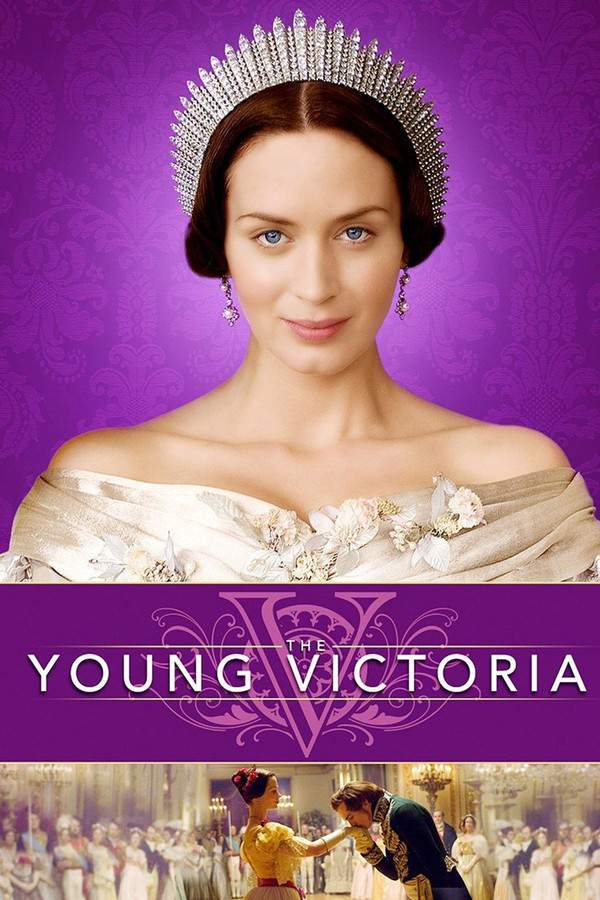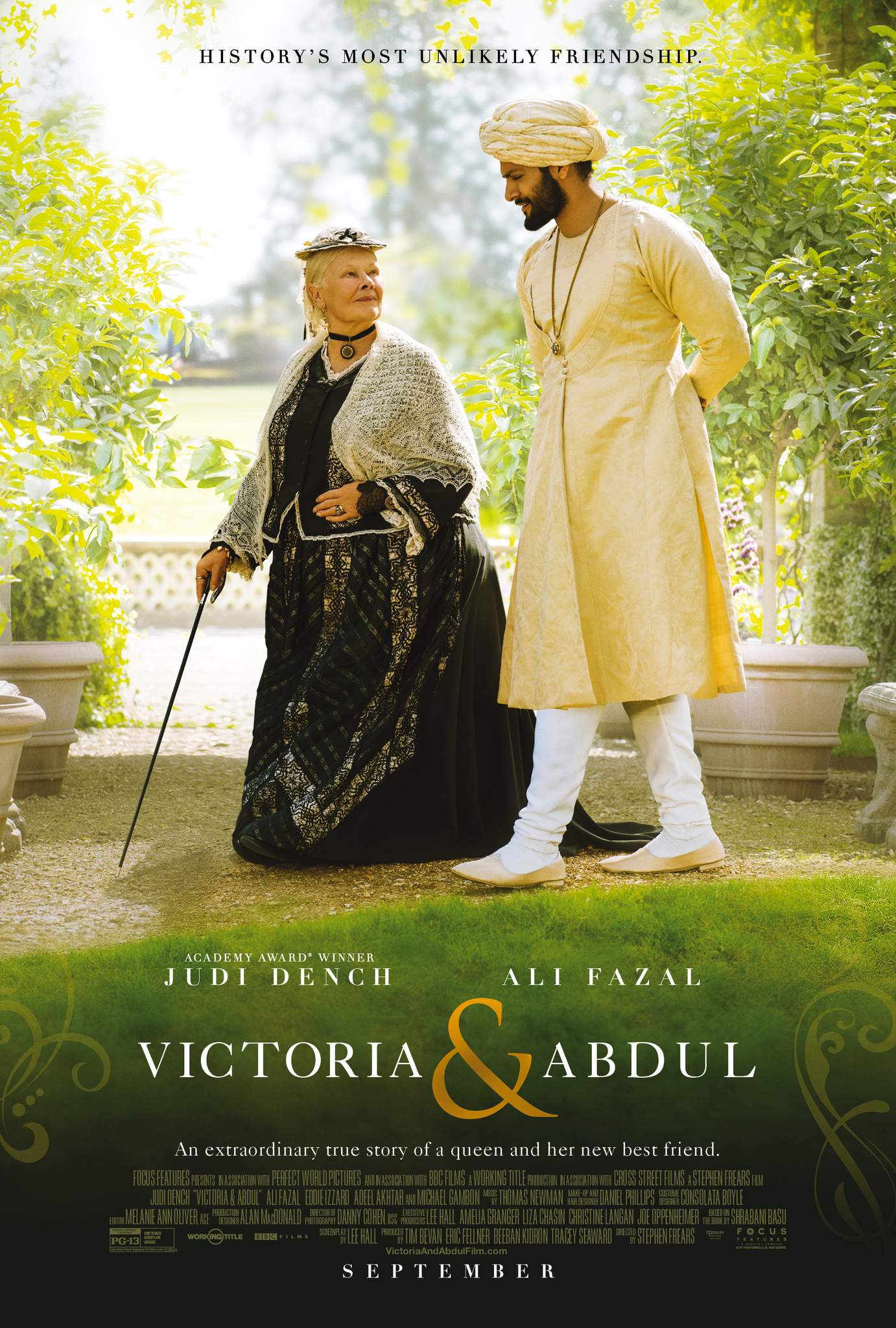
The Young Victoria 2009
Directed by

Jean-Marc Vallée
Made by

Apparition
Test your knowledge of The Young Victoria with our quiz!
The Young Victoria Plot Summary
Read the complete plot summary and ending explained for The Young Victoria (2009). From turning points to emotional moments, uncover what really happened and why it matters.
In a tense power struggle, Princess Alexandrina Victoria of Kent finds herself caught in a web of political intrigue as her uncle’s reign approaches its end. Unbeknownst to her, her mother, Victoria, Duchess of Kent, and the household comptroller, Sir John Conroy, are scheming to manipulate her into signing documents that would give them control over the throne should she ascend before reaching adulthood. This Machiavellian plot is designed to keep them influential until Victoria turns twenty-five.
Simultaneously, her uncle, King Leopold I of Belgium, has his own agenda. He intends to broker an alliance between the United Kingdom and Belgium through his nephew, Prince Albert of Saxe-Coburg-Gotha, who just so happens to be Victoria’s cousin. The cunning monarch meticulously guides Albert on what pleases Victoria, hoping to secure a union that will strengthen their family ties.
When the Duchess invites Albert’s sibling, Ernest of Saxe-Coburg-Gotha, to visit, Victoria and Albert forge an unexpected connection, despite her suspicions about Uncle Leopold’s ulterior motives. Following Albert’s departure, their friendship develops through letters, revealing a bond that transcends mere familial duty.
During a birthday reception at Windsor Castle, King William IV delivers a harsh insult aimed at Victoria’s mother, aggravating the already strained relationship between Conroy and Victoria. The monarch’s decision to increase her income meets opposition from Conroy, leading to a confrontation that exacerbates their tensions.
To ensure Victoria remains close, King William sends Prime Minister Lord Melbourne to guide her. She appoints him as her private secretary, surrounding herself with ladies-in-waiting linked to the government, unaware that the monarch’s demise is on the horizon, coinciding with Victoria’s coming of age.
Upon assuming the throne, Victoria boldly claims her independence, distancing herself from her mother and ousting Conroy from her life and coronation. With a passionate declaration, she vows to serve her country during her inaugural meeting with the Privy Council and takes residence in the newly constructed Buckingham Palace.
As Albert returns, their connection deepens as they engage in discussions about shared interests and social issues. Though Victoria resists closer intimacy, the stage is set for future developments in their relationship. Amid political shifts with Sir Robert Peel’s government poised to take over, Victoria faces a critical choice: adapt to Peel’s wishes about appointing new ladies-in-waiting or remain loyal to her current advisors. Her refusal to acquiesce allows Peel to form a new government, causing her popularity to wane amid protests outside Buckingham Palace. This turmoil only strengthens Victoria’s reliance on Albert, with whom she begins exchanging increasingly intimate letters after inviting him back to Britain.
Their romance, filled with tender moments and heartfelt declarations, soon confronts the challenging realities of married life, as Albert strives to find his place in the palace’s complex hierarchy. Queen Adelaide advises Victoria to allow Albert more autonomy, a suggestion he takes to heart, reorganizing the royal household and dismissing Conroy for mismanagement.
As Victoria’s trusted ally, Albert becomes a crucial protector, shielding her from the schemes of Lord Melbourne and King Leopold. However, their relationship is tested during a fierce argument sparked by Albert negotiating in secret with Peel about the ladies-in-waiting. Their bond is ultimately strengthened when an assassin targets Victoria, and Albert heroically shields her, sustaining injuries in the process. This act of courage prompts reconciliation, and Melbourne wisely encourages Victoria to involve Albert in her charitable pursuits.
The arrival of their first child signals a significant shift in Victoria’s relationship with her mother, who previously expressed support in a heartfelt letter. Victoria’s enduring love for Albert remains steadfast, enduring long after his passing, as she rules for an impressive sixty-three years, leaving a legacy that resonates for decades to come before her own death at eighty-one.
The Young Victoria Timeline
Follow the complete movie timeline of The Young Victoria (2009) with every major event in chronological order. Great for understanding complex plots and story progression.
Political Manipulation
Princess Alexandrina Victoria finds herself ensnared in a web of political intrigue, largely driven by her mother, the Duchess of Kent, and Sir John Conroy. They conspire to manipulate Victoria into signing documents that would transfer control over the throne to them before she reaches adulthood.
King Leopold's Agenda
Simultaneously, her uncle, King Leopold I of Belgium, seeks to orchestrate a political alliance between the United Kingdom and Belgium through Prince Albert, Victoria's cousin. King Leopold meticulously guides Albert on how to win Victoria’s affection, hoping to strengthen their family ties through marriage.
Invitation to Ernest
The Duchess of Kent invites Prince Albert's sibling, Ernest, to visit, leading to an unexpected friendship between Victoria and Albert. Despite her initial suspicions regarding her Uncle Leopold's motives, they begin to connect through letters after Albert's departure.
Birthday Reception Insult
During a birthday reception at Windsor Castle, King William IV insults Victoria's mother, exacerbating the tension between Victoria and Conroy. This pivotal moment showcases the strained relationships within the royal household and sets the stage for future confrontations.
Guidance from Lord Melbourne
To keep Victoria close, King William sends Prime Minister Lord Melbourne to advise her. Victoria appoints him as her private secretary, surrounding herself with government-linked ladies-in-waiting, unaware that the King's health is failing as she approaches her coming of age.
Ascension to the Throne
After the King passes away, Victoria ascends to the throne and proclaims her independence, decisively distancing herself from her mother and ousting Conroy from her life. This moment marks a significant transformation in her life, as she asserts her authority during her first meeting with the Privy Council.
Deepening Connection with Albert
As Albert returns to Britain, Victoria and Albert's connection matures through discussions about shared interests and pressing social issues. Though Victoria is hesitant about deepening their bond, their relationship is evolving in a promising direction.
Political Tensions with Peel
Amid a looming government takeover by Sir Robert Peel, Victoria faces a critical decision on whether to conform to his wishes regarding new appointments among her ladies-in-waiting. Her refusal results in a new government forming and her dwindling popularity amid protests outside Buckingham Palace.
Romantic Developments
Victoria and Albert's romantic relationship flourishes, filled with heartfelt moments and declarations of love. Their bond is tested, however, as they navigate the complexities of royal life, particularly after Victoria invites Albert back to Britain.
Albert's New Role
Taking advice from Queen Adelaide, Victoria allows Albert more autonomy in the royal household. He reorganizes the palace and dismisses Conroy, showcasing his growing influence and their partnership's dynamic.
Protection from Schemes
As Victoria's trusted ally, Albert becomes a crucial protector against the manipulative schemes of Lord Melbourne and King Leopold. Despite their challenges, Albert's unwavering support underscores the strength of their relationship.
Assassin's Attempt
Victoria faces a life-threatening moment when an assassin targets her, but Albert heroically intervenes, sustaining injuries in the process. This courageous act not only saves her life but also strengthens their relationship, leading to a reconciliation after a prior argument.
First Child's Arrival
Victoria and Albert welcome their first child, and this event fundamentally changes Victoria's relationship with her mother, who begins to show genuine support. Their family expands, yet Victoria’s lasting affection for Albert remains the cornerstone of her life.
Legacy of an Era
Queen Victoria’s reign spans an impressive sixty-three years, during which she becomes a significant figurehead in British history. Even after Albert's passing, her enduring love for him shapes her legacy, impacting how she rules until her own death at eighty-one.
The Young Victoria Characters
Explore all characters from The Young Victoria (2009). Get detailed profiles with their roles, arcs, and key relationships explained.
Princess Alexandrina Victoria
Princess Victoria is portrayed as a strong-willed and independent young woman who navigates the treacherous waters of royal politics. She evolves from a vulnerable girl into a determined monarch, asserting her authority and making choices that define her reign. Her relationship with Albert reveals her capacity for love and partnership.
Prince Albert of Saxe-Coburg-Gotha
Prince Albert is depicted as intelligent and charming, possessing a blend of sensitivity and strategic thinking. He becomes a steadfast ally and romantic partner to Victoria, helping her navigate the complexities of court life. His commitment to Victoria and their shared vision for the future shapes the story's emotional core.
Victoria, Duchess of Kent
The Duchess of Kent is a complex figure, driven by ambition and a desire for control over her daughter's future. Her manipulative tendencies arise from her political aspirations, placing her at odds with Victoria's growing independence. Despite her maternal role, she embodies the conflicts between personal ambition and familial loyalty.
Sir John Conroy
Conroy is depicted as scheming and power-hungry, representing the political interests that seek to manipulate Victoria for personal gain. His character embodies the darker side of court politics, emphasizing the struggle between control and independence. He ultimately becomes an obstacle to Victoria’s growth and autonomy.
The Young Victoria Settings
Learn where and when The Young Victoria (2009) takes place. Explore the film’s settings, era, and how they shape the narrative.
Time period
19th Century
The 19th century was marked by significant political and social change, including the expansion of the British Empire and evolving roles of monarchy and governance. This era encapsulates the early reign of Queen Victoria, highlighting the dynamics of power and personal relationships within royal circles.
Location
Windsor Castle, Buckingham Palace
Windsor Castle is one of the oldest and largest inhabited castles in the world, known for its stunning architecture and royal connections. Buckingham Palace serves as the official residence of the British monarch and is recognized globally as a symbol of the monarchy.
The Young Victoria Themes
Discover the main themes in The Young Victoria (2009). Analyze the deeper meanings, emotional layers, and social commentary behind the film.
⚔️
Power Struggle
The movie intricately portrays the themes of power and control amidst a backdrop of political intrigue. As Victoria navigates her ascent to the throne, her personal relationships become entangled with the machinations of those around her. This tension elucidates the delicate balance between personal desires and political obligation.
❤️
Love and Loyalty
At its core, the film emphasizes the deepening connection between Victoria and Albert, illustrating how their relationship evolves amid adversity. Love becomes a refuge for Victoria, allowing her to assert her independence while maintaining loyalty to those who support her. Their bond highlights the intersection of duty and personal affection.
🛡️
Bravery and Protection
Albert's protective nature and his willingness to shield Victoria from danger underscore themes of bravery and selflessness. His heroic actions during the assassination attempt reveal not only his love for Victoria but also the complexities of their relationship as they tackle external threats together.

Coming soon on iOS and Android
The Plot Explained Mobile App
From blockbusters to hidden gems — dive into movie stories anytime, anywhere. Save your favorites, discover plots faster, and never miss a twist again.
Sign up to be the first to know when we launch. Your email stays private — always.
The Young Victoria Spoiler-Free Summary
Discover the spoiler-free summary of The Young Victoria (2009). Get a concise overview without any spoilers.
In a world of gilded halls and whispered counsel, a sudden death propels a teenage heir to the pinnacle of power. Victoria finds herself thrust from the sheltered confines of her childhood into the formidable seat of a nation, where every smile may conceal ambition and every decision carries the weight of an empire. The film bathes the 19th‑century British court in a lush, almost reverent palette, allowing the grandeur of palaces and the intimacy of private chambers to coexist, setting a tone that balances regal ceremony with the restless heartbeat of youth.
Around her, a network of influential figures begins to shape the contours of her reign. Duchess of Kent, her mother, exerts a determined, maternal ambition, while her trusted household manager, Sir John Conroy, offers guidance tinged with self‑interest. Meanwhile, King Leopold I, her cunning uncle, weaves his own continental designs, using familial ties to steer political currents. These intertwined relationships form a delicate web of expectation and manipulation, hinting at the complex power struggle that will test the young monarch’s resolve.
Amid the swirling currents of duty, a surprising connection blossoms with Prince Albert, a cousin whose intellect and compassion provide a counterpoint to the machinations of the court. Their burgeoning rapport offers Victoria a glimpse of personal fulfillment beyond the throne’s demands, suggesting that love may become a guiding force in her rule. Added to this mix is Lord Melbourne, a seasoned statesman whose seasoned counsel serves both as a source of stability and a reminder of the seasoned political world Victoria must navigate.
The film’s atmosphere is one of quiet tension beneath opulent splendor, where the sparkle of chandeliers masks the undercurrents of intrigue. Victoria must learn to discern sincerity from strategy, carving an identity that honors tradition while forging her own path. As she steps into her role, the audience is invited to witness the delicate dance between personal desire and sovereign responsibility, setting the stage for a reign that will later be defined by both heart and history.
Can’t find your movie? Request a summary here.
Movies with Similar Twists and Themes
Uncover films that echo the narrative beats, emotional arcs, or dramatic twists of the one you're exploring. These recommendations are handpicked based on story depth, thematic resonance, and spoiler-worthy moments — perfect for fans who crave more of the same intrigue.
Featured on this page

What's After the Movie?
Not sure whether to stay after the credits? Find out!
Explore Our Movie Platform
New Movie Releases (2026)
Famous Movie Actors
Top Film Production Studios
Movie Plot Summaries & Endings
Major Movie Awards & Winners
Best Concert Films & Music Documentaries
Movie Collections and Curated Lists
© 2026 What's After the Movie. All rights reserved.











